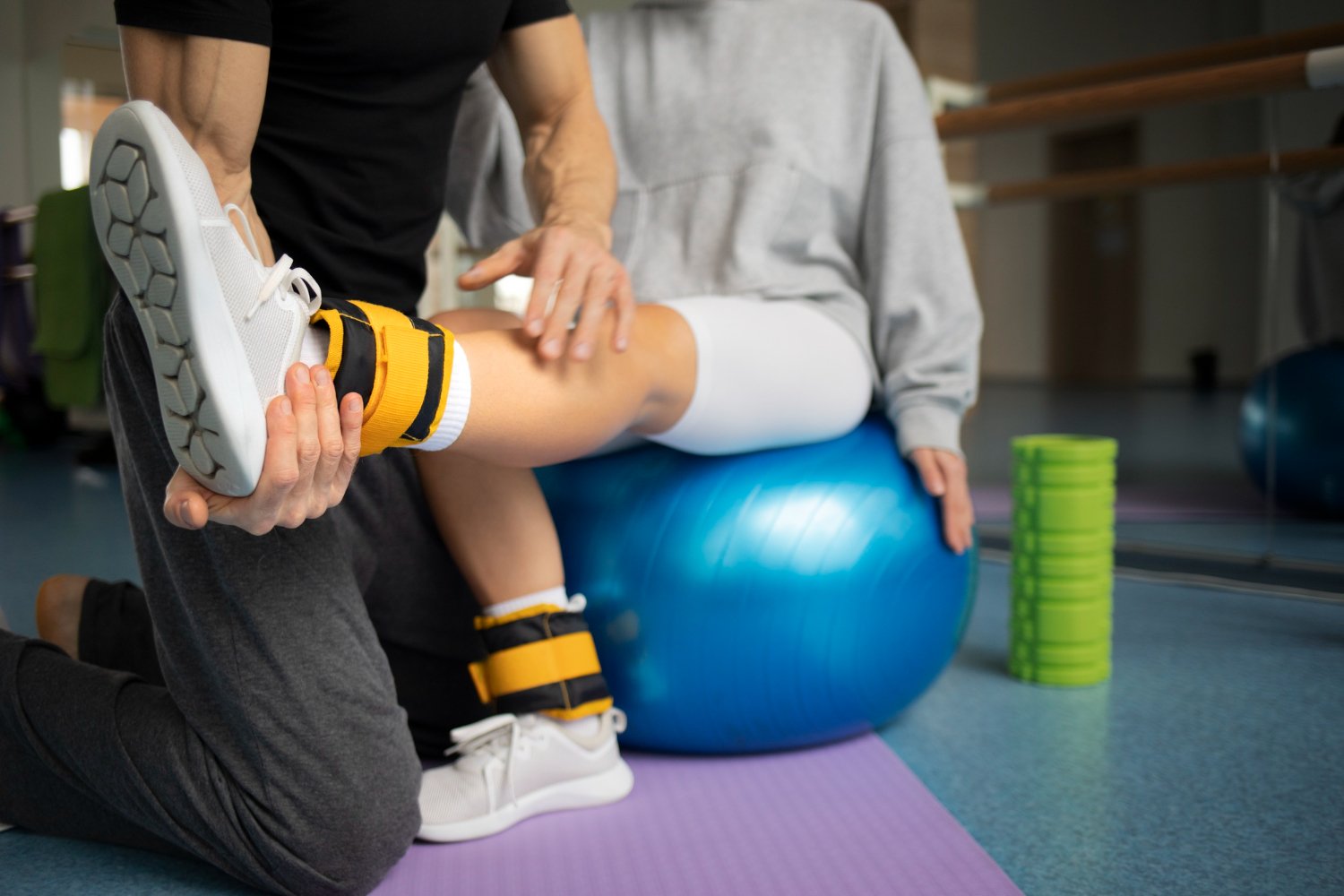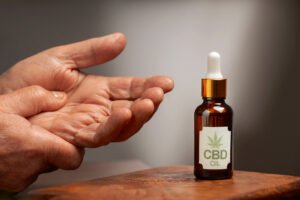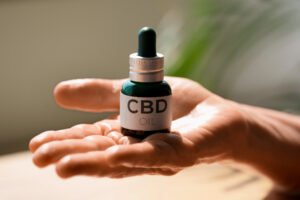CBD Roll-Ons for Injury Rehabilitation and Recovery: 10 FAQ Answered
Introduction to CBD Roll-Ons CBD roll-ons are increasingly recognized for their potential benefits in the realm of injury rehabilitation and recovery. These topical…
Introduction to CBD Roll-Ons
CBD roll-ons are increasingly recognized for their potential benefits in the realm of injury rehabilitation and recovery. These topical products combine cannabidiol (CBD) with other natural ingredients, providing a convenient and effective means to target specific areas of discomfort. Unlike oral CBD products, which are absorbed through the digestive system, roll-ons deliver cannabinoids directly to the skin, thereby allowing for localized relief from pain, inflammation, and muscle stiffness.
The mechanism of action for CBD roll-ons is centered around the interaction of CBD with the body’s endocannabinoid system (ECS). The ECS plays a crucial role in maintaining homeostasis, regulating functions such as pain perception, mood, and immune response. When applied topically, CBD is thought to bind with CB2 receptors located within the skin, potentially resulting in reduced pain sensation and inflammation. This localized application helps ensure that the active compounds act directly where they are most needed, making CBD roll-ons an attractive option for individuals seeking relief from injury-related discomfort.
The growing popularity of CBD roll-ons for injury recovery can be attributed to their ease of use and effectiveness. Athletes, physical therapists, and individuals recovering from various injuries are increasingly turning to these topical solutions as part of their rehabilitation strategies. By providing a non-invasive alternative to traditional pain management methods, such as injections or oral medications, CBD Roll-Ons for Injury offer a promising approach to addressing injury-related issues. As research into the efficacy of CBD continues to expand, it is anticipated that more individuals will explore the potential benefits of these innovative products in their recovery protocols.
Understanding CBD and Its Benefits
Cannabidiol (CBD) is a non-psychoactive compound derived from the Cannabis sativa plant, known for its potential therapeutic properties. Unlike its well-known counterpart, tetrahydrocannabinol (THC), CBD does not induce a high, making it a more favorable option for those seeking relief from various ailments without the side effects associated with traditional cannabis use. The origin of CBD can be traced back to centuries of traditional medicine, where it was utilized for managing pain and inflammation.
Recent scientific research has brought to light the benefits of CBD, particularly in the context of injury recovery. One of the primary mechanisms through which CBD operates is its interaction with the body’s endocannabinoid system (ECS), a complex network of receptors that play a vital role in regulating numerous physiological processes, including pain sensation and immune response. By binding to the receptors in the ECS, CBD may help to modulate pain perception, thus providing relief for individuals recovering from injuries.
Moreover, CBD has demonstrated anti-inflammatory properties that can further assist during rehabilitation. Inflammation is a natural response to injury but can also hinder recovery if prolonged. Studies indicate that CBD roll-ons for injury can reduce inflammation at the site, potentially speeding up the healing process. Additionally, CBD can promote muscle recovery by easing muscle tension and soreness, which often occur after intense physical activity or injury. Thus, incorporating CBD into one’s recovery regimen through topical applications like roll-ons can enhance the overall therapeutic experience.
In conclusion, the growing body of research supports the use of CBD as an effective option for pain management, inflammation reduction, and muscle recovery. For those exploring alternatives in injury rehabilitation, CBD Roll-Ons for Injury present a practical and promising choice, aligning with the increasing popularity of natural remedies in contemporary wellness practices.
How CBD Roll-Ons Work
CBD roll-ons represent a topical application that delivers the therapeutic benefits of cannabidiol directly to specific areas of the body. When applied, the active ingredients in these roll-ons penetrate the skin, allowing for localized treatment of muscle and joint pain. The skin consists of multiple layers, and CBD’s lipophilic nature enables it to interact with the lipid membranes, facilitating absorption into deeper tissues where inflammation and discomfort may occur.
Once the CBD penetrates the skin, it interacts with the endocannabinoid system (ECS), which plays a crucial role in regulating various bodily functions, including pain perception, inflammation, and immune responses. The ECS comprises cannabinoid receptors found throughout the body, particularly in the skin, making it well-suited for topical applications. The targeted delivery that CBD Roll-Ons for Injury provide can result in faster relief compared to other forms, such as oils or edibles, which must undergo digestion and metabolism before their effects are felt.
Unlike oral CBD products that are swallowed, which may take longer to produce effects and can involve systemic interactions, CBD Roll-Ons for Injury offer a more immediate response primarily in the area of application. This localized approach can help mitigate issues related to specific injuries, such as sprains or strains, by delivering concentrated doses right where they are needed. Additionally, many CBD roll-ons incorporate other beneficial ingredients, such as menthol or essential oils, which can enhance their effects by providing a sensation of cooling or warming that further alleviates discomfort.
In summary, CBD roll-ons for injury rehabilitation present an efficient means of delivering relief directly at the source of pain or inflammation, distinguishing themselves from competing formats by their targeted application and rapid absorption properties.
Benefits of Using CBD Roll-Ons for Injury Recovery
The utilization of CBD roll-ons for injury rehabilitation has gained significant attention within both the medical community and among individuals seeking alternative pain relief solutions. One of the primary advantages of these topical applications is their potential for targeted pain relief. When applied directly to the affected area, CBD Roll-Ons for Injury deliver cannabinoids through the skin, allowing for localized effects without the systemic side effects typically associated with oral consumption methods. This approach can be particularly beneficial for athletes or individuals recovering from injuries, providing them with immediate relief where it is most needed.
Furthermore, the anti-inflammatory properties of CBD are noteworthy. Research suggests that cannabinoids can help to reduce inflammation, which is a central factor in the recovery process. By addressing this inflammation, CBD roll-ons may promote faster healing and support rehabilitation efforts. This can be especially relevant for those suffering from sports injuries, joint pain, or chronic conditions that involve inflammation. By integrating CBD roll-ons into their recovery regimen, individuals may experience a decrease in pain and swelling, thereby enhancing mobility and overall quality of life.
Convenience is another significant benefit of CBD roll-ons for injury rehabilitation. These products are portable and easy to apply, making them suitable for use at home, in the workplace, or even on the go. This ease of use encourages individuals to incorporate them into their daily routines, promoting consistent application that can lead to improved outcomes. Additionally, CBD roll-ons can be used in conjunction with traditional recovery methods such as physiotherapy, icing, or compression. This complementary approach can enrich the recovery process and may lead to a more effective and holistic treatment strategy.
Choosing the Right CBD Roll-On Product
When selecting a CBD roll-on for injury rehabilitation and recovery, there are several critical factors that should guide your decision. One of the primary considerations is the concentration of CBD in the product. The potency can significantly influence its effectiveness; therefore, it is advisable to choose a roll-on that offers a concentration suitable for your specific needs. Typically, roll-ons may contain varying levels of CBD, and understanding your personal tolerance and the severity of your condition can help determine the best fit.
Another vital aspect to consider is the inclusion of additional ingredients, such as essential oils or botanical extracts, which can enhance the therapeutic effects of the CBD roll-on. For instance, oils like lavender or eucalyptus may provide complementary benefits, such as soothing inflammation or promoting relaxation. Evaluating the ingredient list can help ensure that the roll-on not only contains CBD but also synergistic elements that contribute to your healing process.
A crucial component of product selection is the assurance of quality and safety, which is best confirmed through third-party testing. Reputable manufacturers often subject their products to rigorous quality control measures, providing certificates of analysis that confirm the ingredient claims and the absence of harmful substances. This transparency is an essential marker of trust and quality in the market.
Lastly, sourcing high-quality CBD roll-ons for injury from well-established and respected manufacturers contributes significantly to the efficacy of the product. Researching the brand’s reputation, manufacturing processes, and customer reviews can provide insight into the reliability of the product they offer. By taking these factors into account, consumers can make informed choices that enhance their recovery and rehabilitation process.
Application Techniques and Tips
Utilizing CBD roll-ons for injury rehabilitation requires a systematic approach to application to maximize their benefits. Begin by cleansing the area of skin where the roll-on will be applied to remove dirt and sweat, ensuring better absorption of the product. This preparatory step is crucial as it helps the active compounds penetrate the skin more effectively.
When applying the CBD roll-on, use a gentle, circular motion to massage the area affected by injury. This not only aids in spreading the product evenly but also enhances circulation to the area, potentially improving its therapeutic effects. It is advisable to start with a small amount, applying just enough to cover the skin without excess, which could lead to wastage. Reapply as needed, typically two to three times a day, depending on the severity of the injury and individual sensitivity to CBD.
Targeting specific areas is important when using CBD roll-ons. Common zones include joints, muscles, and any other localized injuries. The roll-on’s ease of use allows for focused treatment, making it suitable for conditions such as strains, sprains, or any discomfort associated with physical activities. However, users should avoid applying the product on open wounds or broken skin to prevent irritation or adverse effects.
Finally, it is essential to consider personal sensitivity. Individuals new to CBD products should start with lower concentrations and gradually increase as needed, allowing the body to adjust. Additionally, consulting with a healthcare professional prior to use, particularly for those with existing medical conditions or who are pregnant, is advisable. Adhering to these application techniques and tips can significantly enhance the effectiveness of CBD roll-ons for injury recovery.
Potential Side Effects and Considerations
While CBD roll-ons for injury rehabilitation and recovery have gained popularity for their therapeutic benefits, it is important to remain informed about potential side effects and considerations before use. Generally, cannabidiol (CBD) is well-tolerated among users; however, there may be some common reactions. These can include mild irritations at the application site, such as redness or a slight burning sensation. Such effects are usually transient and resolve quickly without the need for intervention.
In rare cases, individuals may experience more significant adverse effects, including allergic reactions, dizziness, or gastrointestinal disturbances. While these occurrences are not prevalent, they underscore the importance of cautious use, particularly for new users or those with sensitivities to topical formulations. Before incorporating CBD Roll-Ons for Injury into a rehabilitation regimen, it is wise to conduct a patch test to ensure no allergic reactions develop.
Moreover, individuals with certain health conditions should exercise caution. Those who are pregnant or breastfeeding, as well as individuals on existing medications, must consult healthcare professionals prior to using CBD roll-ons for injury recovery. This holds true because CBD can interact with various medications by altering their metabolism, leading to potentially unwanted effects. It is crucial for anyone with a pre-existing medical condition or those who are currently taking prescription drugs to evaluate the safety and appropriateness of using cbd roll-ons for post-workout.
As with any therapeutic product, responsible usage is key. Keeping track of how the body responds to CBD Roll-Ons for Injury can help optimize their benefits while minimizing the risks. Users are encouraged to monitor their reactions and seek medical advice if any concerning symptoms arise. By understanding potential side effects and approaching use mindfully, individuals can benefit from CBD in their recovery from injuries.
Personal Testimonials and Case Studies
The use of CBD roll-ons for injury rehabilitation has gained popularity among individuals seeking alternative pain relief solutions. Many users have shared their personal experiences, showcasing a spectrum of outcomes with these topical applications. For instance, a competitive athlete recovering from a sprained ankle reported significant improvement after incorporating cbd roll-ons for injury into her rehabilitation routine. She noted that the targeted application provided consistent relief, allowing her to return to training faster without relying solely on over-the-counter medications.
Another case study involves an individual dealing with chronic lower back pain following an injury. After trying multiple traditional treatments with little success, this person turned to cbd roll-ons for injury support. The testimonials revealed that the topical application offered localized relief, reducing inflammation and alleviating discomfort, which greatly enhanced his day-to-day activities. The ease of application and pleasant texture of the roll-on contributed to the overall positive experience.
Conversely, some users have encountered varying results. A middle-aged man with a knee injury shared his experience with cbd roll-ons for injury recovery. While initially optimistic, he found that while the roll-on helped with minor discomfort, it did not fully address the pain he experienced during physical activities. Such testimonies underscore the importance of understanding that responses to CBD roll-on products can vary based on individual circumstances, including the severity of the injury and the person’s unique physiology.
These personal narratives shed light on the potential benefits and limitations of using cbd roll-ons for injury rehabilitation. While many have reported positive experiences and effective pain management, others suggest a cautious approach, advocating for combined therapies or consultation with healthcare professionals to ensure optimal recovery.
Frequently Asked Questions About CBD Roll-Ons
As CBD roll-ons for injury gain popularity for their potential therapeutic benefits, many individuals seek information to make informed decisions. Below, we address ten frequently asked questions to help clarify common concerns.
1. What are CBD roll-ons? CBD roll-ons are topical products infused with cannabidiol (CBD). They are designed for direct application to the skin, which allows for targeted relief for injuries or discomfort.
2. How do CBD roll-ons work? CBD interacts with the body’s endocannabinoid system when applied topically. This system plays a crucial role in regulating pain, inflammation, and overall homeostasis, potentially aiding in the recovery process.
3. Are CBD roll-ons effective for injury rehabilitation? Many users report varying degrees of relief from pain and inflammation. However, effectiveness can depend on individual factors such as skin type, severity of injury, and sensitivity to CBD.
4. How should I apply CBD roll-ons for optimal results? Ideally, apply a generous amount to the affected area and gently massage it into the skin. For best results, use two to three times daily or as needed.
5. Are there any side effects associated with CBD roll-ons? Typically, CBD is well tolerated, but some users may experience skin irritation or allergic reactions. Conduct a patch test prior to broader application.
6. Is it legal to use CBD roll-ons? The legality of CBD products varies by location. In many regions, CBD derived from hemp is legal, provided it contains less than 0.3% THC. Always check local laws before purchasing.
7. How do CBD roll-ons compare to other pain relief methods? CBD roll-ons provide localized relief without systemic effects, unlike oral medications. This can be beneficial for those seeking targeted treatment with potentially fewer side effects.
8. Can I use CBD roll-ons alongside other treatments? It is generally safe to use CBD roll-ons in conjunction with other pain relief methods; however, it is advisable to consult with a healthcare professional before combining treatments.
9. How long does it take for CBD roll-ons to take effect? The onset of relief can vary, with some individuals experiencing effects within minutes, while others may take longer. Factors such as skin absorption rates contribute to this variation.
10. Where can I purchase reliable CBD roll-ons? Look for reputable brands that provide third-party lab testing results to ensure product quality and potency. Health stores, pharmacies, and online retailers often carry a range of options.
Addressing these frequently asked questions not only aids in understanding CBD roll-ons for injury but also dispels common myths, promoting informed choices in injury management and recovery.
You can also read other blog posts of us such as
CBD Roll-Ons for Post-Workout Recovery: Do They Really Work? or
CBD Roll-Ons for Post-Workout Recovery or
10 Top-Rated CBD Pain Roll-ons for Athletes (2025) and
The 8 Best CBD Roll-Ons for Pain in 2025
For latest updates please keep up with www.cbdflex.com







